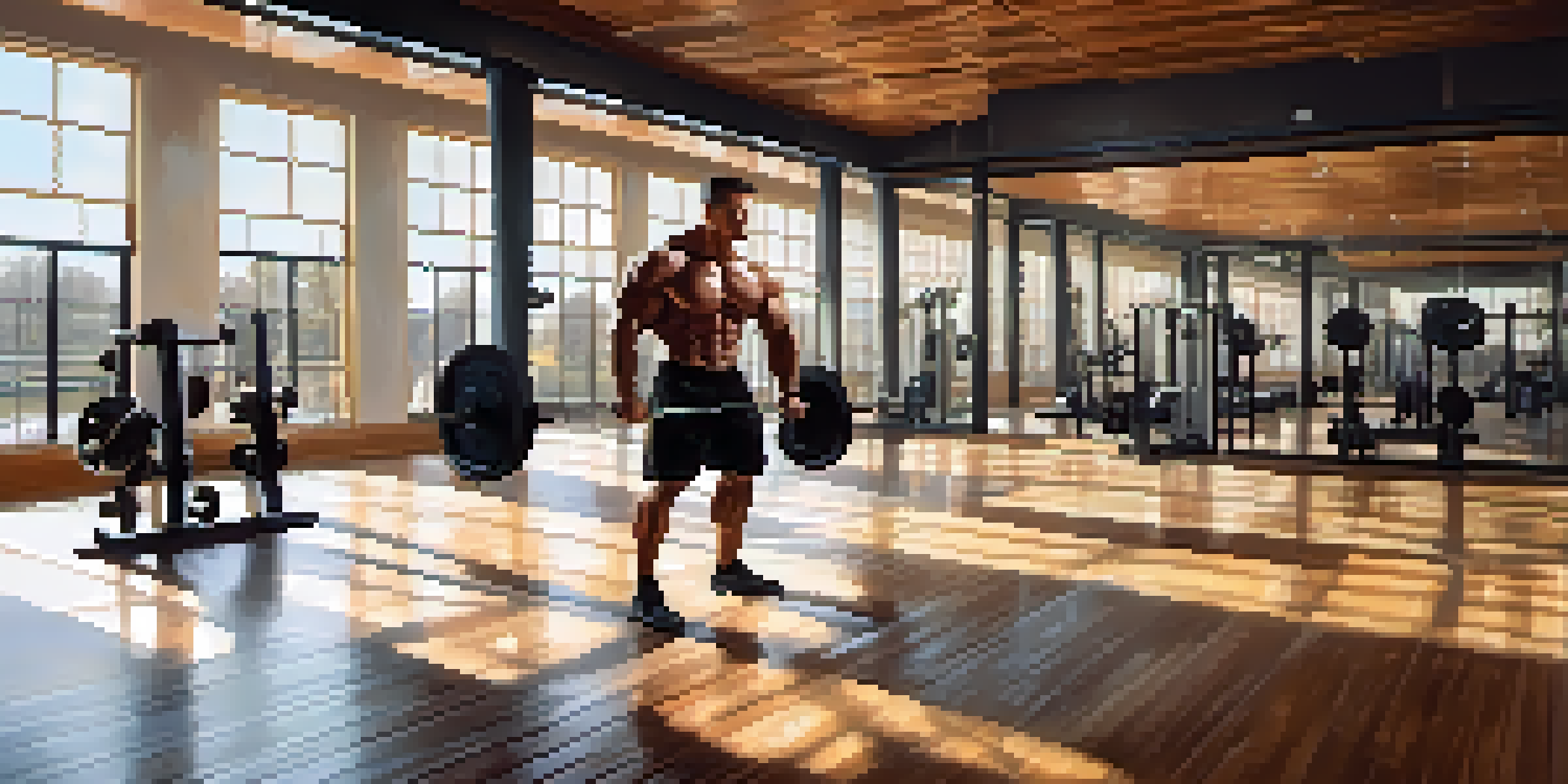Mastering the Basics: Bodybuilding Terminology Explained

Understanding Reps and Sets in Bodybuilding
When you hear the terms 'reps' and 'sets,' think of them as the building blocks of your workout. A 'rep' (short for repetition) is one complete motion of an exercise, like lifting a weight. Meanwhile, a 'set' is a group of consecutive reps, for example, completing 10 reps of bicep curls makes one set.
The difference between a successful person and others is not a lack of strength, not a lack of knowledge, but rather a lack in will.
To illustrate, if your workout plan says to perform three sets of 10 reps, you would do 10 curls, rest, do another 10, rest again, and finally, complete your last 10. This structure helps in tracking your progress and pushing your limits safely. Understanding this concept is crucial for effective training.
In short, mastering the terminology of reps and sets is essential for anyone serious about bodybuilding. It not only helps you structure your workouts but also aids in communicating with trainers and fellow gym-goers.
What is Progressive Overload?
Progressive overload is a key principle in bodybuilding that refers to gradually increasing the stress placed on your muscles. This can be achieved by lifting heavier weights, increasing the number of reps, or reducing rest time between sets. The idea is simple: to grow stronger and bigger, your muscles need to be challenged consistently.

Imagine your muscles as a rubber band. If you keep stretching it to the same length, it won’t change. However, if you stretch it a little further each time, it will eventually adapt and become more flexible. Similarly, progressive overload forces your muscles to adapt, leading to growth and increased strength over time.
Master Reps and Sets for Success
Understanding the structure of reps and sets is crucial for effective bodybuilding workouts.
Incorporating progressive overload into your training plan ensures that you don’t plateau. It keeps your workouts fresh and challenging, ultimately contributing to better results and a more satisfying fitness journey.
The Importance of Nutrition in Bodybuilding
Nutrition plays a fundamental role in bodybuilding, often being the unsung hero behind muscle growth and recovery. A balanced diet rich in proteins, carbohydrates, and healthy fats provides the necessary fuel for workouts and recovery. For example, protein helps repair muscle fibers broken down during exercise, making it essential for building strength.
Strength does not come from physical capacity. It comes from an indomitable will.
Think of your body as a car; without the right fuel, it won’t run efficiently. Just as a high-performance car needs premium gasoline to function at its best, your muscles need quality nutrients to thrive. Eating a variety of foods can help you achieve the right balance, so don’t shy away from fruits, veggies, and whole grains.
Ultimately, mastering your nutrition can be just as crucial as your workout regime. By understanding the importance of what you put into your body, you can maximize your gains and enhance your bodybuilding journey.
Exploring Muscle Groups: Push, Pull, Legs
In bodybuilding, workouts are often structured around three main muscle groups: push, pull, and legs. The 'push' exercises involve muscles used to push weights away from your body, like bench presses and shoulder presses. On the other hand, 'pull' exercises target the muscles that pull weights towards you, such as rows and pull-ups.
The leg workouts focus on the lower body, targeting the quadriceps, hamstrings, calves, and glutes through exercises like squats and deadlifts. This division not only helps in balancing muscle development but also allows for targeted recovery, ensuring that specific muscle groups get adequate rest between workouts.
Nutrition Fuels Muscle Growth
A balanced diet rich in proteins, carbs, and fats is essential for optimal muscle development and recovery.
By understanding these groupings, you can design a well-rounded workout plan that enhances strength and muscle growth. It also helps avoid overtraining specific areas, allowing for optimal performance in your bodybuilding journey.
What’s the Role of a Spotter?
A spotter is an essential partner in bodybuilding, especially when lifting heavy weights. Think of them as your safety net; their primary role is to assist you during exercises, ensuring you can complete your sets without risking injury. Spotters are particularly important during exercises like bench presses, where losing control of the weight can lead to serious accidents.
Having a spotter can also boost your confidence, allowing you to push your limits more safely. For instance, if you’re attempting to lift heavier than usual, knowing someone is there to help can motivate you to go for that extra rep. This teamwork not only enhances your workout but also fosters a supportive gym environment.
In summary, utilizing a spotter not only increases safety but also elevates your training experience. It's a great way to encourage each other while working towards your bodybuilding goals.
Understanding Muscle Failure and Its Benefits
Muscle failure occurs when your muscles can no longer perform a given exercise due to fatigue. While it may sound daunting, reaching muscle failure can be a beneficial technique for those looking to maximize their training. It signifies that you have pushed your muscles to their limits, promoting growth and strength adaptations.
Think of muscle failure as a point of no return. Just like when you're running a race and feel you can't go any further, pushing through that barrier can lead to significant improvements. However, it’s essential to approach this technique wisely; overdoing it can lead to injuries, so proper form and technique should always come first.
Rest is Key to Muscle Recovery
Prioritizing rest and recovery is vital for muscle repair and preventing overtraining in bodybuilding.
Incorporating muscle failure into your workouts can help you break through plateaus and achieve new levels of strength. Just remember to balance this method with adequate recovery to allow your muscles to rebuild stronger.
The Importance of Rest and Recovery
Rest and recovery are often overlooked aspects of a successful bodybuilding routine. Many enthusiasts focus solely on lifting weights, forgetting that muscles need time to recover and grow. Adequate rest allows your body to repair the microscopic tears caused during workouts, leading to bigger and stronger muscles.
Consider your muscles like a sponge; after being soaked in water (your workouts), they need time to dry out before they can absorb more. Without proper recovery, you risk overtraining, which can lead to fatigue, decreased performance, and even injuries. This is why incorporating rest days into your workout schedule is crucial.

By prioritizing rest and recovery, you not only enhance your performance but also foster long-term success in bodybuilding. Listen to your body, and don’t hesitate to take that well-deserved break when needed.